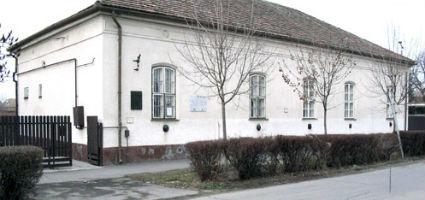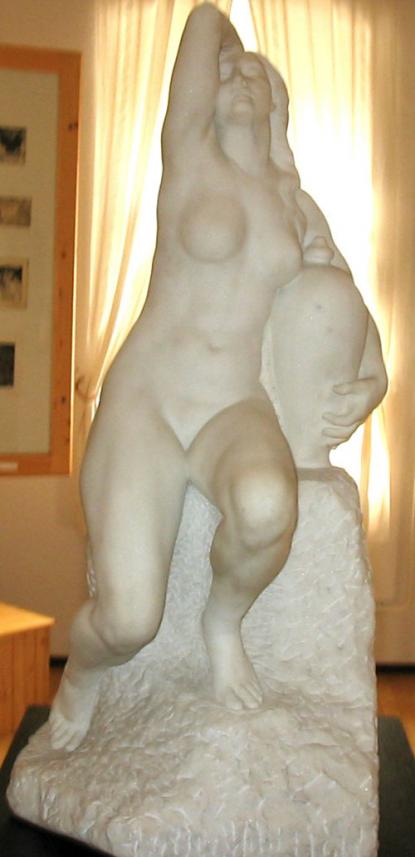2024. April 23. Tuesday
Béla Vidovszky Region History Collection (Town Gallery) - Gyomaendrőd
 |
Address: 5500, Gyomaendrőd Kossuth u. 11.
Phone number: (66) 282-067, (70) 418-7133
E-mail: keptar@gyomaendrod.hu
Opening hours: 01.01-31.05, 01.09-31.12.: Mon, Wed, Fri 13-18, Tue, Thu 8-12
|
Museum tickets, service costs:
|
Ticket for adults
|
400 HUF
|
|
|
Ticket for students
|
200 HUF
|
|
|
Ticket for pensioners
|
200 HUF
|
Pásztor János born in Gyoma grew up in Hódmezővásárhely. His mother enrolled him at the Sculptor Faculty of the Drawing School at the age of 15, in 1896. He was the youngest of all the kids. He was soon appreciated by his mates due to his talent and diligence.

After graduating from collage, he travelled to Paris and began his studies at the Julian Academy. The art of Rodin inspired him immensely. Rodin's approach to art was similar to that of Pásztor János. Both of their ideal was the Renaissance man. He travelled to Florence and Roma to visit museums. The principle Rodin also believed in strengthened in him. After returning home to Vásárhely, he found, there was not enough work for him in town so he moved to Budapest. He did portraits, tombstones and public statues.
Pásztor won the sculptor prize at the application announced by the Arts Hall in 1925. Other contenders included Kisfaludi Strób Zsigmond and Szentgyörgyi István. In the twenties, applications were announced with the subject of "Trianon". The statue set representing the detached parts symbolising the four directions was made related to one of these applications. The part named "East" was made by Pásztor János. The statues were taken down later, but the scale model of the statue "East" can be seen at our exhibition. The Memorial of Heroes in Székefehérvár is among the most significant of Pásztor's works. The most well known of his public statues is erected in front of the Parliament: the horse statue of Rákóczy Ferenc II in Neo Baroque style. The statues "Fisherman" and the "Ferryman" now in the port of Balatonfüred were commissioned by the state in 1938. His professional acknowledgment provided him with state commissioned and a sure income.
Several of his statues are erected at public places of the country. Now, by favour of the National Gallery, one of these is in the town of his birth, Gyoma.

After graduating from collage, he travelled to Paris and began his studies at the Julian Academy. The art of Rodin inspired him immensely. Rodin's approach to art was similar to that of Pásztor János. Both of their ideal was the Renaissance man. He travelled to Florence and Roma to visit museums. The principle Rodin also believed in strengthened in him. After returning home to Vásárhely, he found, there was not enough work for him in town so he moved to Budapest. He did portraits, tombstones and public statues.
Pásztor won the sculptor prize at the application announced by the Arts Hall in 1925. Other contenders included Kisfaludi Strób Zsigmond and Szentgyörgyi István. In the twenties, applications were announced with the subject of "Trianon". The statue set representing the detached parts symbolising the four directions was made related to one of these applications. The part named "East" was made by Pásztor János. The statues were taken down later, but the scale model of the statue "East" can be seen at our exhibition. The Memorial of Heroes in Székefehérvár is among the most significant of Pásztor's works. The most well known of his public statues is erected in front of the Parliament: the horse statue of Rákóczy Ferenc II in Neo Baroque style. The statues "Fisherman" and the "Ferryman" now in the port of Balatonfüred were commissioned by the state in 1938. His professional acknowledgment provided him with state commissioned and a sure income.
Several of his statues are erected at public places of the country. Now, by favour of the National Gallery, one of these is in the town of his birth, Gyoma.
